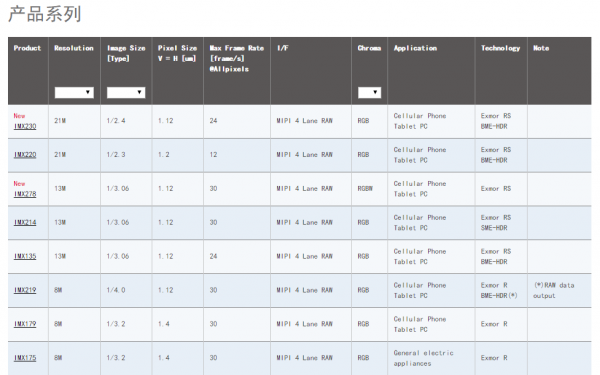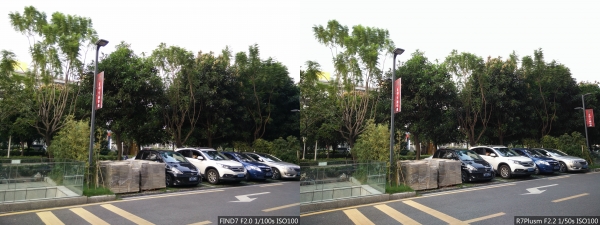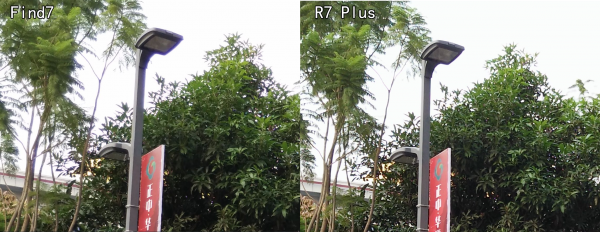
Huawei earlier claimed at the press conference that the Sony IMX278 sensor launched on the P8 was a new RGBW sensor. At this time, many people had doubts. What does this so-called RGBW sensor mean? What is the specific role? How much help for shooting? Next we will analyze the specific proofs together.
RGB, Red, Green, and Blue, three basic colors that can no longer be decomposed, can be combined to create a whole colorful world of color by adding and mixing different proportions. When light passes through the CMOS sensor, each RGB pixel densely arrayed on the CMOS will record the actual color transmitted and detected, and then processed, converted into a digital signal, stored on the device, and finally displayed on the screen. This is the whole process of the birth of a digital color photograph.

In this process, the pixels that determine the color of the proofs are the pixels on the CMOS that are arranged next to each other with “RGBGâ€. In the study, Bryce Bayer, an Eastman Kodak scientist, learned that human eyes are the most sensitive to green objects. Therefore, they use 1 red, 1 blue, and 2 green RGBG arrangements to simulate the colors seen by human eyes. When light passes through each pixel, it will be filtered by the filter of the corresponding color. The rest corresponds to the intensity value of this part of the color, and the sensor itself can only obtain the intensity data of color, and then it can be filtered by RGB. The color intensity data is returned by the processor. However, each pixel is actually filtered in one color, and other colors adjacent to this pixel are determined by “guessing colorâ€, that is, using a de-mosaic algorithm for interpolation to obtain a color image. It is also one of the reasons why color sometimes reverts to inaccurate. Pulling away a little bit, the process of color reproduction will produce color disturbances when photographing highly detailed images, which is often referred to as Moire. To reduce the effect of this moiré, you can use a low-pass filter to blur the details and make it a whole color patch, but this will also reduce the camera's resolution accordingly, which is considered a pros and cons. In recent years, there have been image companies introducing new sensor arrangements, such as the Sigma X3 and Fuji X-Trans sensors. However, these are the last words, and they are still on the Bayer array.

What about the so-called RGBW? The smart classmate may have guessed that this "W" is white in color, that is, changing the RGBG arrangement of the previous 1 red, 1 blue, and 2 green to 1 red, 1 blue, 1 green, 1 White RGBW arrangement. What are the benefits of doing so? In theory, since one of the green filters is directly replaced with a white filter, and the white filter will not filter the light, the amount of light entering will be more. In theory, proofs of low-light shooting pictures should have Better brightness. But the same, because it is a green filter, the color performance may be slightly changed.
Next, we can experience the changes through the performance of some proofs. By the way, we can try our own display devices and our eyes are good or bad. The mobile phone models participating in the proofs comparison include: OPPO Find7 (IMX214), R7 Plus (IMX278), and Xiaomi Note (IMX214). Why did you choose these three phones as a contrast? First of all, there are not many mobile phones using the IMX278. There are only Huawei's P8 and R7 Plus on the market, and there is just one R7 Plus on hand. Then, we should also join Find7, which is also used by OPPO and using IMX214, and then add the now more common IMX214-equipped millet Note. The selection of these three mobile phones is merely a factor of market share and does not mean these Taiwan mobile phone is the best model of IMX214, IMX278.


There may be some doubts about whether the IMX278 is an RGBW sensor. Here, two official Sony documents are released. At present, only the IMX278 is the official RGBW sensor. I believe it has been convincing enough.
(The following image click on the magnifying glass in the upper right corner to view the original larger image)

Let's take a look at the contrast between Find7 and R7 Plus, and put aside the contrast between focus and resolving power. At first glance, the color performance between the two is similar. To control the same exposure, two proofs are needed. Both the focus point and the metering point are set at the black car in the figure. The spot metering of the two mobile phones is more sensitive and the exposure is basically the same.

Then by 100% magnification, carefully observe the color contrast of the proofs, both of which are basically very similar to the green, and are almost indiscernible to the naked eye. However, in the proofs, the gray and red of the R7 Plus basically have a slight slight decrease in saturation, and by observing the backlight edge of the street lamp, the IMX278's suppression of the edge violet is also greatly improved compared to the IMX214.

In comparison with the night scene, R7 Plus is quite large compared to Find7. Both are shot in automatic mode. This sample of Find7 should be the original night shooting level of IMX214 without any optimization. The R7 Plus is obviously sharpened and smeared, so this night shot effect is no longer the original effect of the IMX278. In terms of pure photos, in fact, the high ISO of Find7 makes the proofs brighter overall, and the details are more, of course, the consequence of this is a serious color noise. According to reason, the higher brightness night shooting effect that the IMX278 should appear does not appear, and the less noise is also the result of post-processing. It does not mean that the IMX278 is all credit.

Then on the basis of this comparison, we will join Xiaomi Note's night shoot proof. Xiaomi Note also uses IMX214, but added optical image stabilization, and the observation proofs can also see that Xiaomi Note will also perform appropriate noise on the night shoot proofs. Smeared, but no more detail sharpening should be added. In this way, even if it is IMX214, as long as there is an appropriate post-processing can still get more excellent night scene proofs.

In addition, there is no need to tangled too much between the two sensor models for hue. Since most manufacturers will have post-processing of proofs, the control of hue between different manufacturers is extremely different, such as Xiaomi Note, which is slightly warmer. The color palette will also greatly change the color tone of proofs. For example, problems such as sudden white balance inaccuracy will affect the color performance of the proofs, and the daily shooting process will also encounter large and small problems. It is also tangled.
It seems that in fact whether your phone is stuffed into the IMX214 or IMX278, as long as the manufacturers of this camera optimized effective, their natural shooting effect will not be bad. IMX278, which uses the new RGBW array, is not as legendary as it is. Good hardware still needs better software to get the best out of it. Basically, mobile phone manufacturers will adjust the sensors according to their own needs. The same sensor model, different manufacturers' products and even different manufacturers' products may have different color performances and different proofs. Processing, different imaging styles. Can not simply judge the quality based on the hardware model, whether it is good or bad to have to compare themselves in order to know.
![<?echo $_SERVER['SERVER_NAME'];?>](/template/twentyseventeen/skin/images/header.jpg)